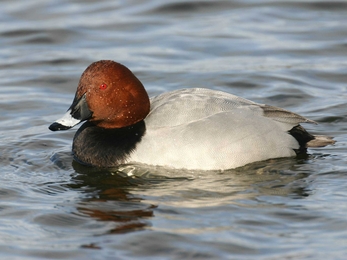Recently I have been exploring the IUCN’s list of endangered species with a view to discovering more about the lesser-known rare species that inhabit Surrey. Without taking the time to find out what’s out there, it will be difficult for us to know how to protect these elusive surprises and where we might expect to find them.
The Common Pochard Aythya ferina is a species of diving duck, feeding on aquatic plants and invertebrates. The male is the more striking bird, with its reddish head and a grey body helping it to stand out and attract the mottled brown females.


